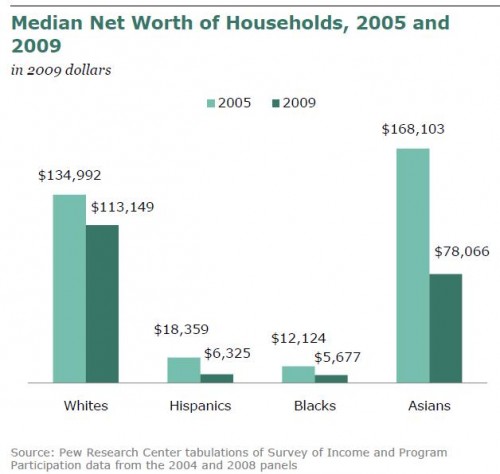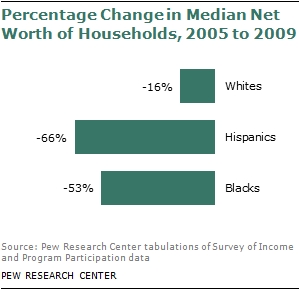Cross-posted at Family Inequality.
The news each month is usually on unemployment rates, weekly filings of new claims, layoffs and new hiring. And the Pew report on widening race/ethnic wealth gaps was eye-opening. But you can take the measure of the recession overall maybe best with the employment rates — how many people have jobs? By that measure, the news is flat-to-down without letup. The Black-White discrepancy in the trends is increasing.
Here is the employment trend for White and Black women, showing that Black women had higher employment rates before the recession, but they’ve fallen more than twice as much as White women’s (a drop of 5.7% versus 2.4% as of June):
 Source: Bureau of Labor Statistics data.
Source: Bureau of Labor Statistics data.
For men, the gap is bigger and the lines further apart, so I added a ratio line to help show the gap. Black men’s rate has fallen 5.6%, compared with 3.8% for White men:
 The Christian Science Monitor has an article reviewing some of the factors that contribute to the unemployment gap for men, including education, incarceration and discrimination. And the Center for American Progress has more detail in this report, which argues that declines in manufacturing and public employment are increasing the Black-White gaps especially in this recession.
The Christian Science Monitor has an article reviewing some of the factors that contribute to the unemployment gap for men, including education, incarceration and discrimination. And the Center for American Progress has more detail in this report, which argues that declines in manufacturing and public employment are increasing the Black-White gaps especially in this recession.
What the broader statistics don’t show as well is the tenuousness of the jobs Black workers have compared to Whites generally — working for weaker firms, in more segregated jobs, as a result of a racialized sorting process, which put them at higher risk of job loss in a recession (even without discrimination in firing decisions, which there is, too).


















